The HubSpot CRM is comprised of over twenty different elements, all of which are available with every HubSpot package.
HubSpot’s CRM feature has over 20 aspects to it. These features are available with all 4 Hub’s HubSpot offers (Marketing, Sales, Service and CMS). Below is an top level look at each aspect of HubSpots CRM features:
Contact management - Build views and run automated actions to easily manage your contacts and data.
Contact website activity - Get insights into what a contact is doing on your website. See page views, form submissions, sales activity, and more, all in one place.
Companies - Store records for every company in your database. View all your company details and communications in a single place.
Deals - Store, track, manage, and report on the deals (sometimes referred to as "opportunities") your sales team is working on.
Tasks & activities - Store, track, manage, and report on the tasks and activities that make up your relationships with customers.
Company insights - See useful insights about companies you're dealing with appear in your database, so your sales team can spend more time selling and less time digging.
Gmail and Outlook integration - Connect HubSpot CRM to your Gmail or Outlook inbox to send emails from the CRM, set up a shared team email account, and access dozens of other useful, time-saving tools.
App Marketplace integrations - Explore the HubSpot App Marketplace and connect your HubSpot account to other tools that you love to use.
Custom support form fields - Add custom fields to your support forms to gather the right information for your team, as well as generating tickets.
Prospects - Use the prospects tool to see which companies are visiting your site, whilst seeing any available insights about them too.
Ticketing - Log customer issues as tickets. They can then be assigned to team members, organised, prioritised, and tracked in a central location.
Forms - Create standalone, pop-up, embedded, and collected forms to gather the contact details that your business needs.
Ad management - Connect accounts from supported ad networks to your HubSpot account. Create audiences from your HubSpot CRM, and see which ads are generating customers.
Conversations inbox - Set up a shared inbox for all incoming email and live chats that your whole team can work from, easily managing 1-to-1 communications at scale.
Reporting dashboard - See detailed metrics on sales activity and performance. Use the data to know how you're doing and where to improve.
Email tracking & notifications - Track one-off emails to contacts. Receive real-time notifications when emails are opened or clicked.
Email templates - Save and reuse your best performing emails, and share them with your team for a faster and more consistent way to communicate with prospects.
Canned snippets - Create a bank of reusable answers for prospects' most frequently asked questions. Quickly add them to live chats or emails to save time and help prospects faster.
Documents - Build a library of sales documents that you can easily share with prospects. Get insight into when and where prospects are most engaged.
Calling - Call prospects through VOIP from inside your HubSpot account. Calls can be recorded and auto-logged on the contact record for future reference.
Meeting scheduling - Share a link with customers that lets them see when you're free and can book meetings with you, cutting out those tedious 'what time works best for you' emails.
Messenger integration - Automatically capture contact information, have two-way communications with your audience, create chatbots, and report on chat volume through Facebook Messenger.
Custom properties - Associate specific data points with contacts, companies, and deals.
